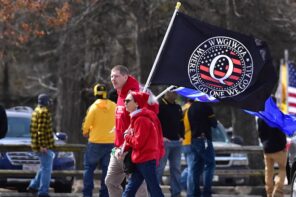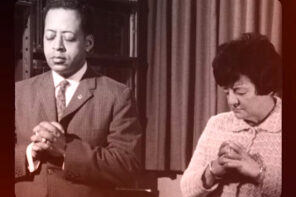At some point during my elementary school years, I noticed that there was always a police car parked outside of our synagogue in suburban New Jersey during services on Rosh Hashanah and Yom Kippur. I cannot remember now if my mother said the car was there to help direct parking, or if she actually said the “S” word: Security, that hush of fear and adrenaline that seeped into our Hebrew school lessons as videos about Entebbe and memories of Munich in 1972 accompanied the alef-bet.
In the way that both children and adults sometimes do, I took the car as a sign that we were not safe because we were different. As Jay Michaelson argues, we can “recognize millennial thinking in our own minds,” and mine seemed to always expect—briefly, quite irrationally—an undoing of the world. I imagined armed men entering the quiet sanctuary, always marking the nearest exit door, just in case.
To this day, I’m not sure why that police car was always on hand, but I could not stop picturing it yesterday when I learned of the horrific shooting that took place at a Sikh gurdwara in Oak Creek, Wisconsin, the state I now call home. It made me wonder: were my childhood fears that a gunman would enter our temple actually rational? How do violence, holy spaces, and diversity intersect in America?
Terror in holy spaces is not a new facet of American religious history. Church and synagogue bombings occurred during the civil rights movement, including the notorious 1963 attack that took the lives of four young girls in Birmingham, Alabama. Sikh Americans have been targeted and killed in acts of terror before and after the events of 9/11. Religionists can quickly rattle off myriad global, historical sites of contested holy space. But there is still something deeply nauseating, unhomed, un-everything, about attacks on vulnerable human beings at prayer, or about to pray. We want to believe in religious spaces as safe dwellings, as sanctuaries in the most literal sense of the word—but they have also long been targets for Americans who fear change.
In the wake of yesterday’s shooting, we have seen quite rational calls for greater religious literacy and appeals to what governor Scott Walker called “evil”. Americans could indeed use a primer on most world traditions. But what I wonder is how a desire for empathy might square up against the dichotomized language of “evil.” As Amardeep Singh eloquently argues, the hatred directed towards Sikhs might connect to a visceral reaction to embodied religious otherness. How do we move from promoting basic facts to combatting that profane shudder of hatred? To see the horror of the killer within, of his commonality and ordinariness, and to remember that security reports have long pointed to the likelihood of many others like him, is much harder than ascribing this tragedy to “evil.”
Ironically, this horror in suburban Milwaukee came just hours before the Curiosity rover successfully touched down on Mars. At this stage, we can only speculate about the killer’s motives, but, ever so curiously, his bullets evidenced the ugliest possible fear of “alien” others just as other Americans were harnessing our collective intelligence and technological capabilities to explore a truly alien landscape.
I am reminded of how both the text and radio broadcast of War of the Worlds occurred at moments of great population and political shifts in the United Kingdom and the United States. Aliens, vampires, and other monsters—these otherworldly beings are often metaphors for our this-worldly ways of organizing difference. Jeffrey Jerome Cohen calls the monster “difference made flesh, come to dwell among us” and the “harbinger of category crisis.” Timothy Beal notes how monstrosity has been central to our Orientalized imaginings of “other” religions, but can also hold us in tension with ourselves: horror, he writes, “reveals an abominable, monstrous otherness within, without reducing that otherness to sameness, without making it entirely familiar.”
I fear that yesterday’s events might spark the fearful imaginations of another generation of American children—Sikhs, Muslims, Jews, Christians, all. Those of us who teach and write about religion need to pass along facts and literacy, to be sure—but we also need to address that visceral discomfort that our students bring into the classrooms, that we all bring, in varying degrees of consciousness, into one another’s space. Let’s be sure that our (perhaps futile) attempts to understand yesterday’s events do not “float above history.” We are not in a clash of civilizations or a war of the worlds. Evil does not “beget” violence. We do.




